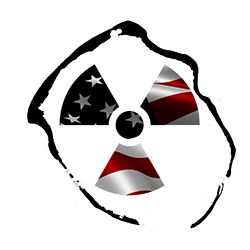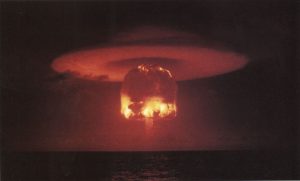Operation Castle
A Quantum Shift
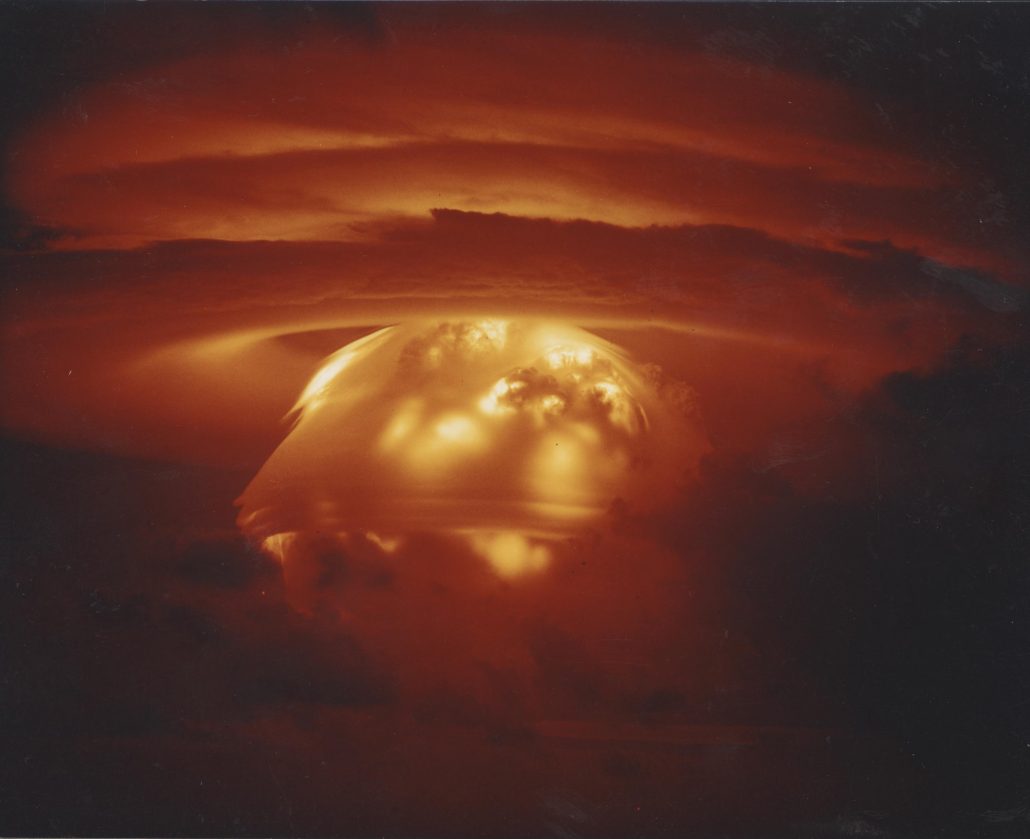
Castle is the seminal event around which the entire future of the Marshall Islands will pivot. As you will see, things quickly go very wrong or exactly as planned, depending on your point of view. The Ivy series of tests before it had shown that thermonuclear weapons of almost unimaginable power were suddenly within reach; they just needed to be downsized and simplified so they could be delivered to where the damage needed to be done. Ivy Mike had been a gigantic ‘wet’ liquid deuterium fueled weapon, weighing 82 tons and housed in a three-story building. It was anything but deliverable.
The first shot in this series, Bravo, was a new dry, lithium deuteride design, codenamed Shrimp, which greatly reduced the size and weight of the device, without sacrificing any of the destructive force. This bomb was deliverable. It’s was a Teller/Ulam design after Edward Teller and Stanislaw Ulam, its principal designers. As was the case with many new designs, no-one knew precisely what kind of destructive power the Shrimp would produce. Estimates put the potential yield anywhere between 4 and 8 megatons. Weapons design was, at this stage still something of highly informed guesswork, a matter of throwing enough mud at the wall until something stuck. Many variations on a theme would work, some much more efficiently than others. The trick was in finding which ingredients of the pudding were positive and which were negative, in which combination and why; enriched, not enriched, layered design or levitated, wet or dry; the permutations were almost endless.
 In almost doubling its best-expected yield, the Bravo weapon surprised everyone to such an extent that this test rapidly got away from its handlers and became the first, genuine nuclear disaster (we’ll forget about Crossroads Baker for now!).
In almost doubling its best-expected yield, the Bravo weapon surprised everyone to such an extent that this test rapidly got away from its handlers and became the first, genuine nuclear disaster (we’ll forget about Crossroads Baker for now!).
To clear the way for the test, the islanders had been moved from Bikini to a neighboring atoll, called Rongelap, less than a hundred miles to the Southeast. Bravo erupted at 6:45 in the morning, lighting up the sea for hundreds of miles. The islanders refer to it as the day the Sun rose twice. Bravo instantly vaporized three small islands on the Northwest rim of the atoll, while burning a crater in the atoll wall 6500 ft wide and 250 ft deep. The fireball at one second was already 4 1/2 miles wide and was seen in Kwajalein, 250 miles away. So intense was the thermal energy of this weapon that it ignited fires on Eneu, a small island at the opposite end of the lagoon, 23 miles away. The sheer violence of the explosion sucked up vast amounts of vaporized coral calcium and sand. The mushroom cloud rushed skyward at almost a thousand feet a second and then, at about 130,000 ft, it hit shearing winds that blew in precisely in the right direction to carry any fallout toward Rongelap and Uterik which lay ninety and three hundred miles away, respectively. On the neighboring Rongerik Atoll, U.S. monitoring equipment capable of measuring one hundred millirads per hour went off the scale. Nuclear bunker on Bikini
 The Teller/Ulam design ‘Shrimp’ device
The Teller/Ulam design ‘Shrimp’ device
Some hours later, the coral that had been the Bikinian atoll wall began to fall on Rongelap. For the children, it looked for all the world like the snow they had only ever seen in books. In places, it lay as much as 2″ deep…and so they played in it, rubbed it on themselves and even ate it. The snow began to discolor the vegetation. It fell into their drinking water, turning it bright yellow. Very soon, the people began to feel severely nauseous, their skin burned with rashes and was bleached white. Their hair began to fall out. The next day, some Americans came to the atoll carrying measuring equipment that made a furious clicking sound. They looked very worried, according to the islanders, but they left without saying a word. Knowing that the Bikinians were already suffering, the US inexplicably waited for a full 48 hours to evacuate them. The people on Uterik, a full three hundred miles from Bikini, were also sickened by fallout although the snow did not carry that far, and had to wait an additional 24 hours for their rescue. They were all taken to the US base at Kwajalein for treatment and monitoring.
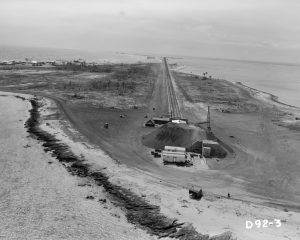 Bravo monitoring station John Anjain speaks of that morning that will so profoundly affect the rest of his life and that of everyone who was on Rongelap, including his son Lekoj, just one at the time of the test, who would die of leukemia at age 19. Bear in mind, when reading his statement, Bikini is 115 miles from Rongelap;
Bravo monitoring station John Anjain speaks of that morning that will so profoundly affect the rest of his life and that of everyone who was on Rongelap, including his son Lekoj, just one at the time of the test, who would die of leukemia at age 19. Bear in mind, when reading his statement, Bikini is 115 miles from Rongelap;
‘Early in the morning of March 1st, 1954, sometime around five or six o’clock, American planes dropped a hydrogen bomb on Bikini Atoll. Shortly before this happened, I had awakened and stepped out of my house. Once outside, I looked around and saw Billiet Edmond making coffee near his house. I walked up and stood next to him. The two of us talked about going fishing later in the morning. After only a few minutes had passed we saw a light to the west of Rongelap Atoll. When this light reached Rongelap we saw many beautiful colors. I expect the reason that people didn’t go inside their houses right away was because the yellow, green, pink, red and blue colors which they saw were such a beautiful sight before their eyes.
The second thing that happened involved the gust of wind that came from the explosion. The wind was so hot and strong that some people who were outside staggered, including Billiet and I. Even some windows fell as a result of the wind.
The third thing that happened concerned the smoke-cloud which we saw from the bomb blast. The smoke rose quickly to the clouds and as it reached them we heard a sound louder than thunder. When people heard this deafening clap some of the women and children fled to the woods.
Later some men went fishing, including myself. Around nine or ten o’clock I took my throw net and left to go fishing near Jabwon. As I walked along the beach I looked at the sky and saw it was like white smoke; nevertheless, I kept on going. When I reached Jabwon, or even a little before, I began to feel a fine powder falling all over my body and into my eyes. I felt it but didn’t know what it was.
I went ahead with my fishing and caught enough fish with my throw-net to fill a bag. Then I went to the woods to pick some coconuts. I came back to the beach and sat on a rock to drink the coconuts and eat some raw fish. As I was sitting and eating, the powder began to fall harder. I looked out and saw that the coconuts had changed color. By now all the trees were white as well as my entire body. I gazed up at the sky but couldn’t see the clouds because it was so misty. I didn’t believe this was dangerous. I only knew that powder was falling. I was somewhat afraid nevertheless.’
With so many manned planes and radio-controlled drones in the air to monitor wind speed, direction and the spread of radiation post-detonation, it’s extremely hard to understand why the test went ahead as it did. Many islanders came to the conclusion that it was deliberate, that the test was timed precisely to coincide with the right weather conditions that would ensure that the Bikinians were blanketed with massive fallout from the test, which is precisely what happened. This is certainly the belief of many outside observers as well but the doctors responsible for treating the islanders would vehemently refute this. At this point, there was some reason to believe that it may have been a monumental, tragic mistake, that the power of Bravo so far outstripped anyone’s predictive abilities that many of the men manning monitoring posts on other islands were also caught unaware. They too were partially irradiated, forced to retreat deep inside their bunkers and wait hours for rescue and for radiation levels to fall. Sixteen crew members aboard the USS Bairoko suffered beta burns from the blast and other ships were forced to flee the area. The obvious question arises; why weren’t the islanders advised or given access to bunkers of their own? And their treatment afterward doesn’t help matters.
In a 1982 interview with Judith Miller of the New York Times, Gene Curbow, chief weather monitoring specialist on Rongelap during the Bravo test confesses that the wind direction had not changed for days, before, during or after the test, putting the lie to the official story that the wind had shifted.
An unlucky Japanese tuna fishing vessel, the Daigo Fukuryū Maru, (ironically translates to Lucky Dragon #5), was just outside the 130 km exclusion zone on the day Bravo was detonated. The crew saw the pre-damn sky light up and minutes later heard the roar of the explosion. Realizing something was very wrong, they turned away from the explosion but not fast enough. Two hours after the blast it, too, was enveloped in the same fine, white ash as the people on Rongelap. It fell on the ship for the better part of three hours. They scooped up the ash with their bare hands and put it in bags. Most of them fell sick very quickly with acute radiation poisoning. They had severe nausea, headache, pain in their eyes and bleeding gums. It is calculated that they received a dose of 300 rad, almost twice that of the people on Rongelap. It took a full twelve days to get back to their home port of Yaizu. Later calculations found that in the first 10 hours the crew received a radiation dose of more than a Sievert, which is close to lethal, and indeed was quickly lethal for one of the crew members and slowly lethal for most of the others despite receiving blood transfusions and intense medical attention. By 2011 16 of the 23 crew were dead, many having died young. Daigo Fukuryū Maru crew member
The radio operator, Aikichi Kuboyama, would die seven months after returning to port. He was just 40, the first acknowledged victim of a hydrogen bomb. The US tried to trivialize the exposure and eventually paid Kuboyama’s widow just $2800, two million dollars in total restitution. Kuboyama’s widow said, in response, “To a third person it might almost seem good to die if your death brings such sums of money. But I can’t buy the life of my husband with money.” In the meantime, the tuna catch from the ship had entered the food system and many feared it was contaminated, causing considerable concern. It was later discovered that 683 other tuna boats had irradiated tuna on board. Over 450 tons of tuna had to be disposed of.
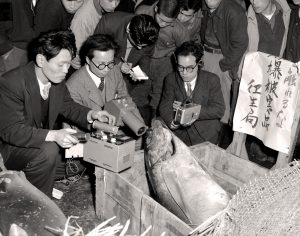 Measuring tuna for radioactivity
Measuring tuna for radioactivity
At the time, there was an irrational fear in Japan that radiation sickness was somehow contagious. Many survivors of the Hiroshima and Nagasaki bombings, called the hibakusha, literally ‘bomb-affected people’, found themse
lves deeply stigmatized. The fishermen were no different and felt they had to move away and find new jobs. The AEC propaganda machine went into high gear, suggesting that the fishermen were well on the way to recovery.
The AEC’s response to the fallout was this: ”
“During the course of a routine atomic test in the Marshall Islands, 28 United States personnel and 236 residents were transported from neighboring atolls to Kwajalein Island according to a plan as a precautionary measure. These individuals were unexpectedly exposed to some radioactivity. There were no burns. All were reported well. After completion of the atomic tests, the natives will be returned to their homes.”
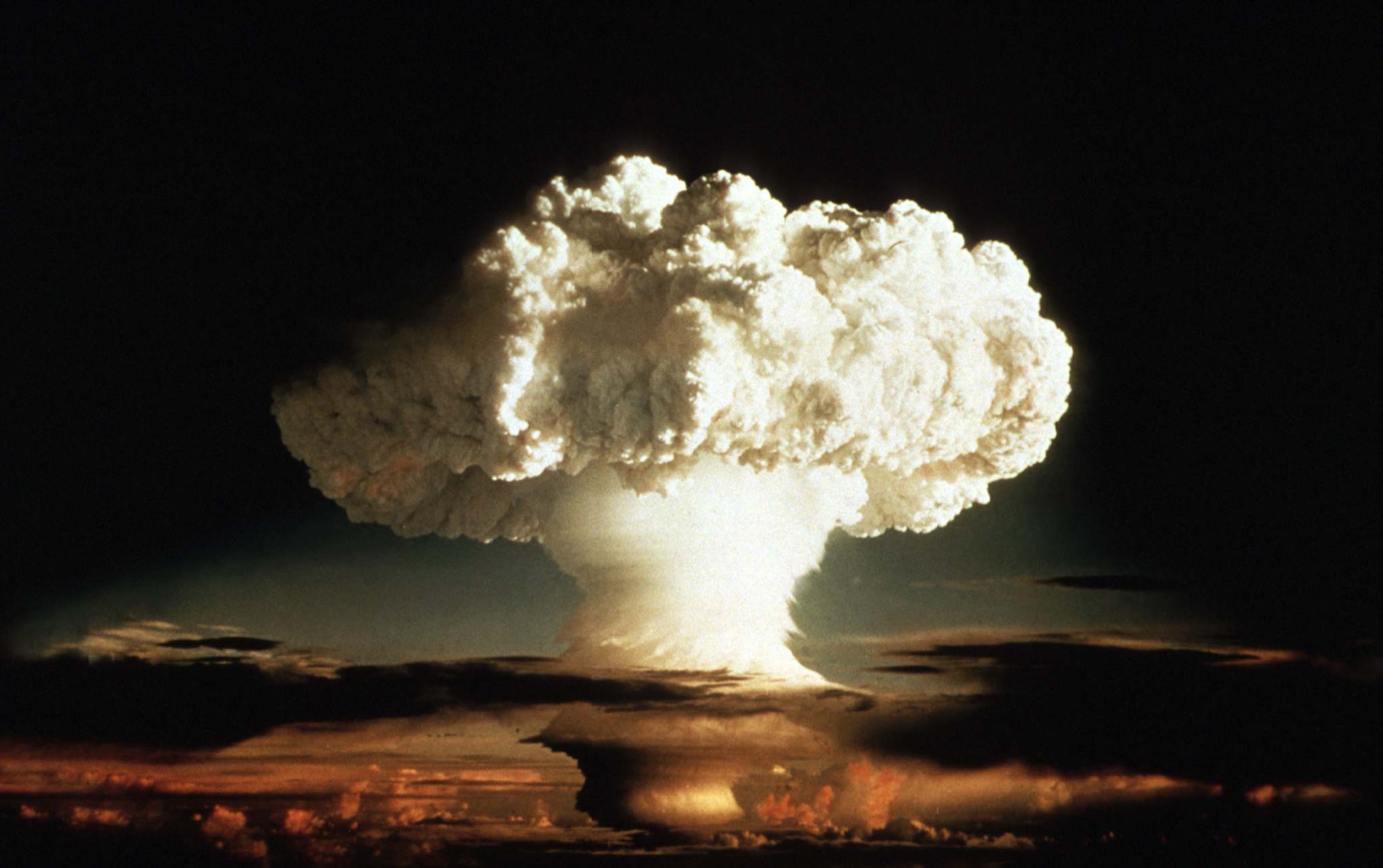
All the most powerful tests were reserved for the Marshall Islands, not the Nevada test site. The fallout in Nevada and neighboring states was already causing anger among the public as it was becoming harder and harder to deny the many cancers erupting around in a circle around Southern Nevada. Local ranchers whose sheep were dropping dead by the thousands were also looking for answers. AEC commissioner Willard F. Libby fumed that confining tests to the Pacific would “set the weapons program back a lot.” But disregarding weather conditions in Nevada would bring more fallout to the St. George area, “which they apparently always plaster,” in the words of AEC chairman Lewis Strauss recorded in the AEC commissioners meeting minutes dated February 23, 1955. This is a tacit acknowledgment of what everyone suspected the AEC knew but was doing it’s level best to disavow. Still, smaller weapons were being tested at an ever increasing rate at the Nevada site. Those tests would become a spectator sport in the early 1950’s in Las Vegas, some partying all night on hotel rooftops, waiting for the next test. Over forty years the US tested more than a thousand weapons at the test site, just 65 miles from Las Vegas.
1954 is the year John Wayne, Susan Hayward, and Agnes Moorehead, all appear in a Howard Hughes production, The Conquerer, filmed in the Utah desert, downwind of the Nevada test site. They were on location for three months. Twenty-five years later they, and Dick Powell the director, would all be dead of cancer. People Magazine researched the film and found that of the 220 involved in the production, 91 had had some form of cancer and 50% of them had died. An AEC official was heard to mutter “please don’t tell me we killed John Wayne.”
Once at the US facility on Kwajalein, it seems to the islanders as if they are being studied but not treated, other than superficial skin treatment for burns. They are never told what has just happened to them or how they might cure their ailments. Years later a secret Project 4.1, headed by Eugene Cronkite, then of the Naval Medical Research Institute, would come to light that, for many, would only confirm their suspicions. Project 4.1 appears to have grown out of a program, dated a year before Bravo, that was designed to observe the effects of long-term exposure to extreme amounts of radiation poisoning over time… on animals. Once the authors realized that they might have a potential human populace to work with, the onus seems to have changed. The full title of the program was “Study of Response of Human Beings exposed to Significant Beta and Gamma Radiation due to Fall-out from High-Yield Weapons”. It was a directive, classified secret – restricted access, and which came with specific instructions not to reveal the purpose of the program for fear of offending national morals.
The official fallout map is wildly inaccurate, vastly underestimating both area and severity
Whether the Bravo exposure was deliberate or not, it seemed clear to the Bikinians that they had become little more than lab rats. Intentional or not, the scientists had a readily available group of subjects with extreme dosage, radiation-related sicknesses on hand, ready for study. There is little doubt that their medical records were withheld from them and that activities on their homelands were shrouded in secrecy. A central figure in this study is one Robert Conard of the AEC’s Brookhaven National Laboratory which would take over the study in 1956. Conard would later write of his love for the Marshallese people and his dismay that the program became so mistrusted. There is little doubt however that, once the subjects were available, they were used to establish baselines for this kind of study for decades to come.When many of the islanders began suffering thyroid tumors they were flown to the US for surgery…and further study.
‘On Rongelap, about two-thirds of the people developed anorexia and nausea and one-tenth had vomiting and diarrhea. In children aged under 5 years, 85% had nausea and 38% had vomiting. Itching and burning of exposed skin was noted by one-fourth of the people. Although the gastrointestinal symptoms lasted only about 2 days, skin burns appeared after 12 – 14 days in about 90% of the Rongelap inhabitants, with ulcerations in 15%. Epilation (loss of hair) occurred in 28% of the adults and in almost all children, in many of whom it was extensive.’
Radiation effects in the Marshall Islands by Jacob Robbins, William H. Adams
Clinical Endocrinology Branch, National Institutes of Health, Bethesda, Maryland: Medical Department, Brookhaven National Laboratory, Upton, New York, USA
After 3 months on Kwajalein, the people from Rongelap were moved again, this time to the capital, Majuro, where they stayed for three years, at the end of which the DoE told John Anjain and his people that it is time to go back to Rongelap. John is skeptical, knowing the atoll is still contaminated. He is told, ‘yes, it is still contaminated but it is not dangerous. And, if you don’t believe us, well then, stay here and take care of yourself.’
This is a veiled threat that their resettlement funds would be cut off if they stayed in Majuro; ‘Stay here and starve or go where we tell you and we’ll keep sending money to live on.’
John Anjain
“In 1957 the people returned to Rongelap and the DoE promised there wouldn’t be any problems to the Rongelap people. However, in 1958 and 1959 most of the women gave birth to something that was not resembling human beings. There was a woman giving birth to a grape. Another woman gave birth to something that resembles a monkey. And so on. There was a child born at that time and there was no shell covering the top of that child’s head.”
In 1995, a declassified study from forty years earlier, the year after the Bravo test reveals that Bravo had actually irradiated 28 of the atolls, essentially the entire republic which, you’ll remember, covers 750,000 square miles. Fallout from the test was found as far afield as Australia and even Europe. It rendered Bikini so radioactive that all subsequent testing there had to be done from offshore barges. Bravo remains the primary reason that Bikini is still uninhabitable. Wyatt’s promise to the people of Bikini in 1946 that they would be able to return home had just gone up in a fireball over 4 miles wide.
Years later Lekoj Anjain, John’s son would die at a hospital in Bethesda Maryland, of leukemia. He was just 19. His father John recounted in his testimony before the United States Senate, Committee on Energy and Natural Resources, June 16, 1977:
“I saw the ash fall on him. I know it was the bomb. I watched him die.”
Despite the cataclysm produced by the Bravo shot, the basic Shrimp design for the device made its creators happy enough to produce a smaller yield version for the arsenal, the 4.5 megaton Mk21.
Almost lost in the mayhem that followed, Castle Yankee, Romeo and the rest of the Castle series become a footnote, despite being the second and third most powerful weapons in the short history of nuclear weapons development. Romeo was projected to have a yield of just 4 megatons but almost tripled that estimate. This low expectation was due in part to the use of inexpensive, unrefined lithium in the fuel.
 The Runt device of Castle Romeo
The Runt device of Castle Romeo
Castle Koon was the last actual weapon that Edward Teller would have any involvement in and it was a failure, a fizzle. It was expected to have a yield of 1 megaton but failed to reach criticality and produced an explosion equivalent to just 110 kilotons. Even so, it left a crater almost 1000 ft across and 90 ft deep. Union TX-14
Union TX-14
Union was barge-mounted in 160 ft of water inside the lagoon and went off successfully, creating a 6.9 megaton explosion. Even at that depth, it left a crater 300 ft across and 90ft deep on the lagoon floor. In all these barge tests, the barge itself would be vaporized.
Yankee was a design that grew out of the Romeo Runt and was simply designated Runt II. They even looked identical from the outside. Runt II used the same enriched lithium as the Shrimp/Bravo device and, as a result, it out-performed its sister, becoming the second most powerful bomb tested.
The Nectar device, code-named Zombie was based on a design conceived by Stanislaw Ulam, Teller’s sometime partner. It was a bomb within a bomb and all theoretical types had to be tested. There was still plenty of mud to throw at the problem. At just 34.5 inches in diameter, 110 inches long, and weighing 6,520 lb, it was a very compact weapon by the day’s standards.
As the dry fuel weapons were proving efficient, wet cryogenic designs that required extreme amounts of cooling and resultant refrigeration plants were rapidly shelved at this point.
Series:
| Test Name | Device Name/ Purpose |
Yield & Predicted Range | Laboratory | Location | Date |
|---|---|---|---|---|---|
| Bravo | Shrimp TX-21 prototype |
15 Megatons (4-8 Megatons) | LASL | Bikini – on reef 2,950 from SW tip of Namu | March 1, 1954 |
| Romeo | Runt EC-17 proof test |
11 Megatons (1.5-7 Megatons) | LASL | Bikini – barge at Union shot site | March 27, 1954 |
| Echo | Ramrod Cryogenic experiment |
125 kilotons (65-275 kilotons) | UCRL | Enewetak – Eberiru – canceled | March 29, 1954 |
| Koon | Morgenstern Solid-fuel experiment |
110 kilotons (0.33-2.5 Megatons) | UCRL | Bikini- Eninman Island | April 7, 1954 |
| Union | Alarm Clock EC-14 proof test |
6.9 Megatons (1-6 Megatons) | LASL | Bikini – barge in lagoon near Yurochi | April 26, 1954 |
| Yankee | Jughead/Runt II | 13.5 Megatons (6-10 Megatons) | LASL | Bikini – barge at Union shot site | May 5, 1954 |
| Nectar | Zombie TX-15 proof test |
1.69 Megatons (1-2.5 Megatons) | LASL | Bikini- barge at Union shot site | May 14, 1954 |
On October 23rd, 1961, the Soviets began a series of tests with a titanic blast of about 58 megatons. It remains the largest single explosion in human history. This was Tsar Bomba, air-dropped over the Northern Russian island of Novaya Zemlya. Detonated at 3:30 a.m., it illuminated the sky for hundreds of miles around. Khrushchev boasted, “It could have been bigger, but then it might have broken all the windows in Moscow, 4,000 miles away.” The Soviets tested four more weapons in 1962, ranging from 20 to 30 megatons.
Stalin, always so distrusting of his atomic scientist’s loyalty, is reported to have said to Lavrenti Beria, his security chief, “Leave them in peace. We can always shoot them later.”
